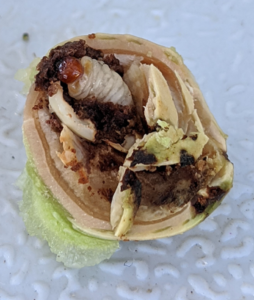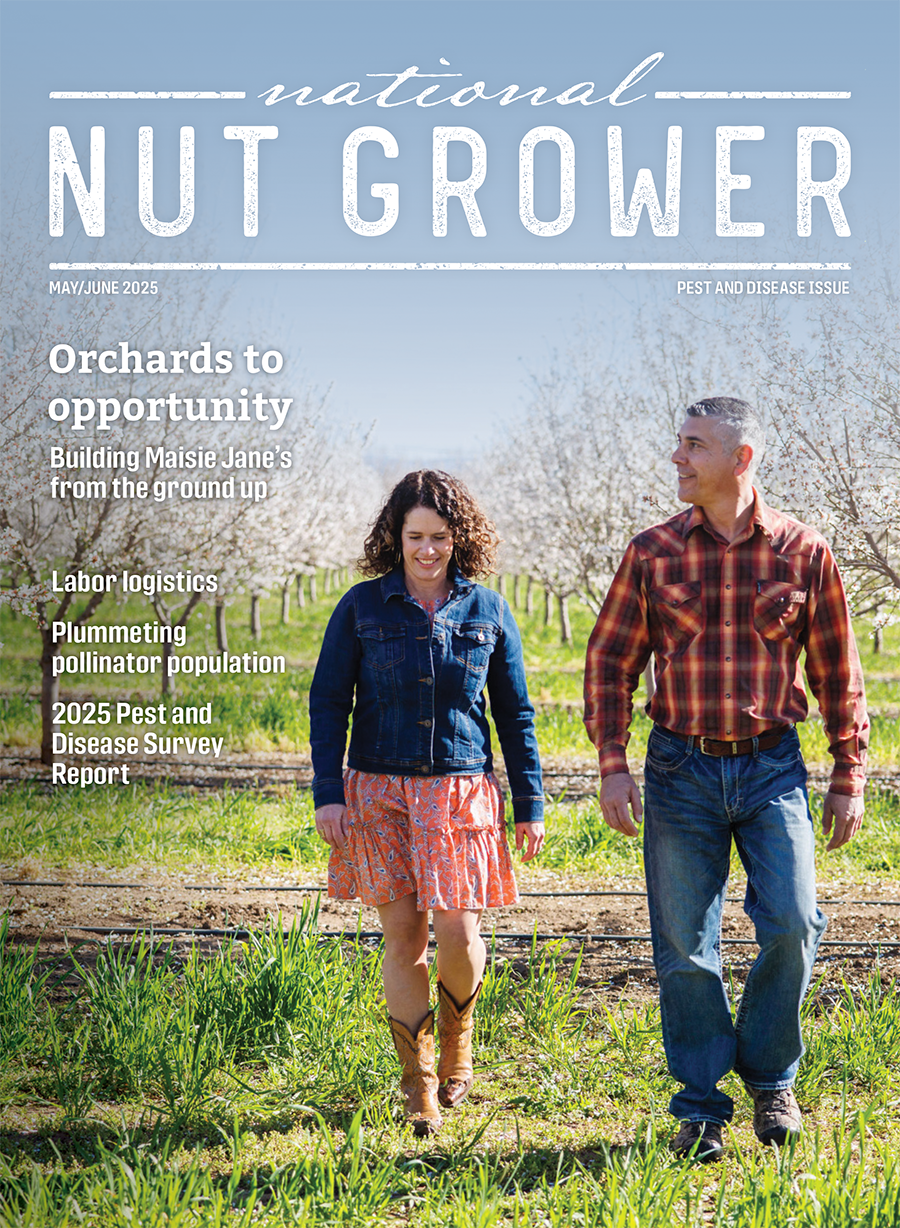
Jun 23, 2022New guide details IPM for weevil pests in hazelnut
People around the globe are nuts about hazelnuts: According to the Food and Agriculture Organization of the United Nations, the global demand for hazelnuts is strong and growing. So much so that countries such as China and the United States have been developing their own hybrid hazelnut plants to increase yields and land area in production to get ahead of the demand. Hazelnuts are increasingly used in baked goods and snack foods, and just in the past few years Nutella has seen significant increases in sales.
Among the most damaging insect pests of hazelnuts worldwide are weevils in the genus curculio. Adult female weevils lay eggs into developing hazelnuts, after which the newly hatched larvae feed on the kernel, the part of the nut that humans eat, until they reach maturity. They destroy the kernel, directly impacting the yield of the crop.
In a new guide published in May in the open-access Journal of Integrated Pest Management, my colleague Brian Aukema, and I outline the weevil species’ natural histories, and we provide an overview of what to expect over the coming decades as hazelnut production expands. The existing literature on these species is largely dated and in other languages, so a compilation of these works and a summary of management tactics are indispensable for the growing industry.
Biology
Worldwide, four species of hazelnut-feeding weevils are known, all within the curculio genus: C. dieckmanni in northeast Asia, C. nucum throughout Europe, the hazelnut weevil (C. obtusus) in eastern North America, and the filbert weevil (C. occidentis) in western North America.
All species injure hazelnuts in the same manner, and they all have very similar appearance as both larvae and adults, with the exception of C. dieckmanni adults, which differ in coloration. Curculio dieckmanni and C. nucum already are responsible for devastating yield losses in untreated hazelnut orchards in China and Europe, respectively, while the hazelnut weevil remains the most understudied, since commercial hazelnut production was not possible in its geographic range until the development of cold-hardy and disease-resistant hybrid plants.

Management
Management of these weevils is generally approached differently depending on the weevil species, region of hazelnut production, or even country. Control methods have been researched the most in Europe and West Asia, because the majority of commercial hazelnut production has historically occurred there. However, China has been making much headway in developing cultural and biological control strategies for C. dieckmanni. The U.S. has done the least research and development of control methods for its weevil species, as hazelnut production has historically only occurred in the Willamette Valley of Oregon, and C. occidentis, which occurs there, generally prefers endemic oak species and rarely causes economic damage to the crop.
Insecticides. The highest yield reductions in China and much of Europe are observed when hazelnuts are not treated with insecticides. However, many hazelnut growers throughout Europe and Asia do not use chemicals for the control of insect pests, while some have resorted to one spray annually to knock down the weevils during adult emergence. In Turkey, where the majority of the world’s hazelnut production currently takes place, some organic insecticides options have been explored and show promise for control of C. nucum.
Biological control. Naturally occurring insect-pathogenic fungi have been found to be highly effective, and insect-eating nematodes have been found to be effective in controlling C. dieckmanni and C. nucum in the field. Beneficial insect-eating nematodes have also proven successful at killing C. nucum and C. occidentis in the field. As far as insect natural enemies, they appear to be far and few between for these weevils, as the larvae remain safe inside developing hazelnut shells or underground for most of their life cycle.
Cultural control. In terms of cultural control strategies, most in the toolbox are for C. dieckmanni in China. Newly developed hybrid hazelnuts, crosses from the European hazelnut (Corylus avellana) and the Asian hazelnut (Corylus mandshurica), are reportedly resistant to C. dieckmanni. Cultivars of European hazelnut grown throughout Europe are generally susceptible to C. nucum, but a few resistant ones have been identified. Additionally, the attractive plant volatiles and the sex pheromone of C. dieckmanni have been identified, which has led to the production of lures and traps for mating distribution of the species. In Turkey, physical removal of adult weevils, whether by hand or by shaking plants, is reportedly the most popular control method.
Outlook
The significance of hazelnut-feeding weevils will continue to increase as production increases globally. Importation of hazelnuts or movement of hazel plants between countries could spread these curculio species to new areas, although the invasive potential of these species has yet to be investigated. It is also unknown if other curculio species not mentioned here could emerge as pests of hazelnuts overtime as production is increased. Future research is needed on the biology, ecology, and management of these weevils, especially C. dieckmanni and the hazelnut weevil, which are each expected to pose economic concerns to China and the United States’ growing hybrid hazelnut industries, respectively.
– Hailey Shanovich, Entomology Today
An adult female weevil drills a hole into a develop hazelnut to lay eggs in it. Photo: Hailey Shanovich









